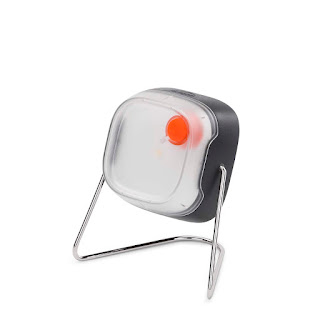Making Power Personal: Sustainably Lighting Homes in Developing Countries
Over a billion people worldwide have little to no access to electricity in their community. About 620 million of those billion are located in Africa. Over the last 30 years, billions of dollars have been spent by domestic and international governments to create a power grid in Africa to connect all communities. However, the intention behind the original concept has not panned out as originally conceived. The idea that power grids must exist to provide industrialization and development has proven to be unsustainable. 21 billion dollars are spent every year to maintain a sub-Saharan system that still does not supply sufficient resources for a steady path of development. To achieve true development, industrialization is key, but the ultimate goal is giving power to homes.
Most African homes rely upon kerosene lamps for light in dark hours. Kerosene is extremely dangerous and does not provide near the same light quality as LEDs or incandescent bulbs. The World Bank has stated that breathing kerosene fumes is equivalent to smoking two packs of cigarettes a day. Subsequently, almost two-thirds of females who develop lung cancer in developing countries are non-smokers. Kerosene fires are a common occurrence, hard to prevent and still happen despite extreme caution. Not only used for lighting houses at night, lamps are also used for reading, studying, and household activities. The solar power industry has created many inexpensive alternatives to kerosene lamps, like solar lanterns, that are safer, cost-effective, and long-term.
Often compared to the mobile cell phone revolution that occurred in developing countries, the solar power industry has become exponentially cheaper in the past decade. Projected to reach a similar peak in ten to fifteen years, solar power solutions are cheaper than they have ever been and easier to install and use than in the past ten or even five years. The economic argument for solar powered lanterns in comparison to kerosene-burning lamps is clear.
Buying a lamp that charges during the day from solar emissions and then is used at night easily eliminates spending on kerosene. Almost 10 billion dollars is spent on kerosene in sub-Saharan Africa every year. Because of the African continent’s geographic location, it garners the most sun exposure and solar power than any other continent. By democratizing literal power and giving families and individuals to decide how they want to use electricity and how much, they no longer have to rely on a power grid that may or may not be built and maintained in their community. For the last decade, d.light has created indoor solar lights and solar lanterns that are used by more than 75 million people in over 60 countries, from rural communities to developing countries. Their solar solutions provide reliable and safe energy while staying affordable and sustainable long-term.
About d.light
d.light develops solar power lanterns and other solar products for off-grid people who lack access to reliable energy. This for-profit, social impact enterprise’s solutions have helped more than 75 million people in over 60 countries worldwide.
To explore products and learn about the solar market, visit Dlight.com
Often compared to the mobile cell phone revolution that occurred in developing countries, the solar power industry has become exponentially cheaper in the past decade. Projected to reach a similar peak in ten to fifteen years, solar power solutions are cheaper than they have ever been and easier to install and use than in the past ten or even five years. The economic argument for solar powered lanterns in comparison to kerosene-burning lamps is clear.
Buying a lamp that charges during the day from solar emissions and then is used at night easily eliminates spending on kerosene. Almost 10 billion dollars is spent on kerosene in sub-Saharan Africa every year. Because of the African continent’s geographic location, it garners the most sun exposure and solar power than any other continent. By democratizing literal power and giving families and individuals to decide how they want to use electricity and how much, they no longer have to rely on a power grid that may or may not be built and maintained in their community. For the last decade, d.light has created indoor solar lights and solar lanterns that are used by more than 75 million people in over 60 countries, from rural communities to developing countries. Their solar solutions provide reliable and safe energy while staying affordable and sustainable long-term.
About d.light
d.light develops solar power lanterns and other solar products for off-grid people who lack access to reliable energy. This for-profit, social impact enterprise’s solutions have helped more than 75 million people in over 60 countries worldwide.
To explore products and learn about the solar market, visit Dlight.com




Comments
Post a Comment